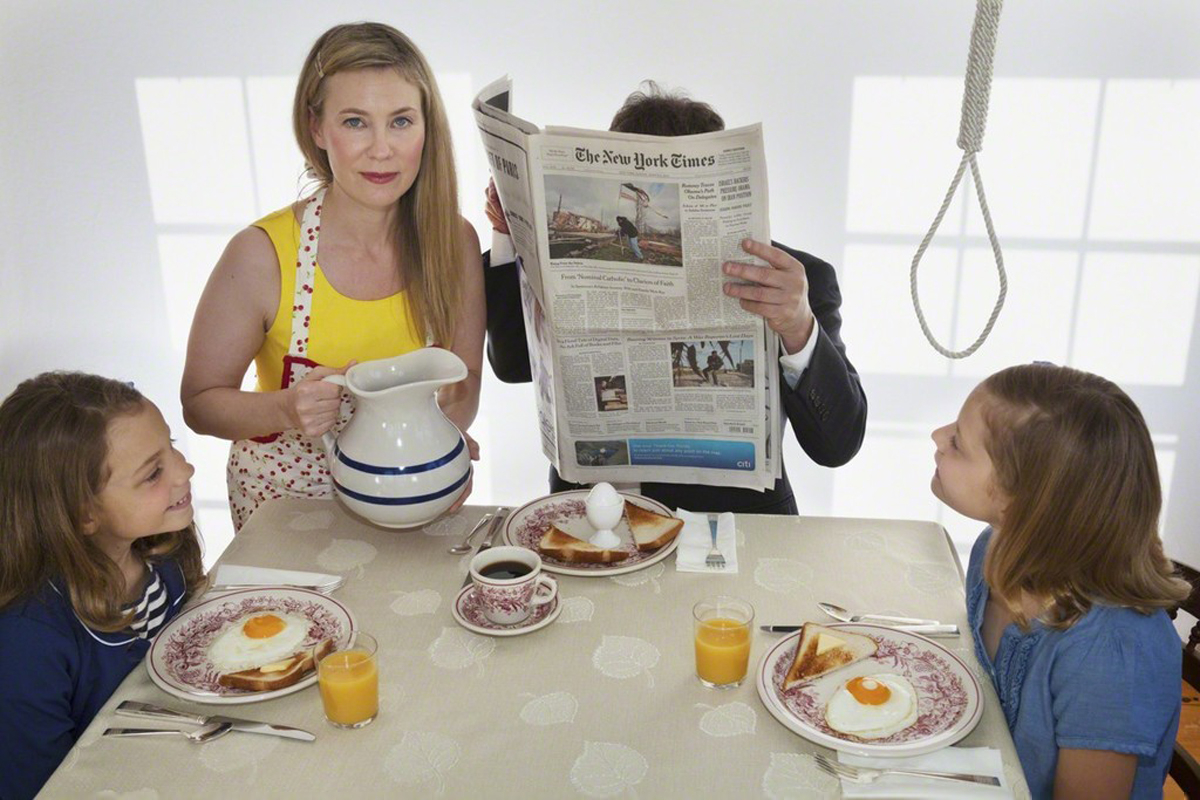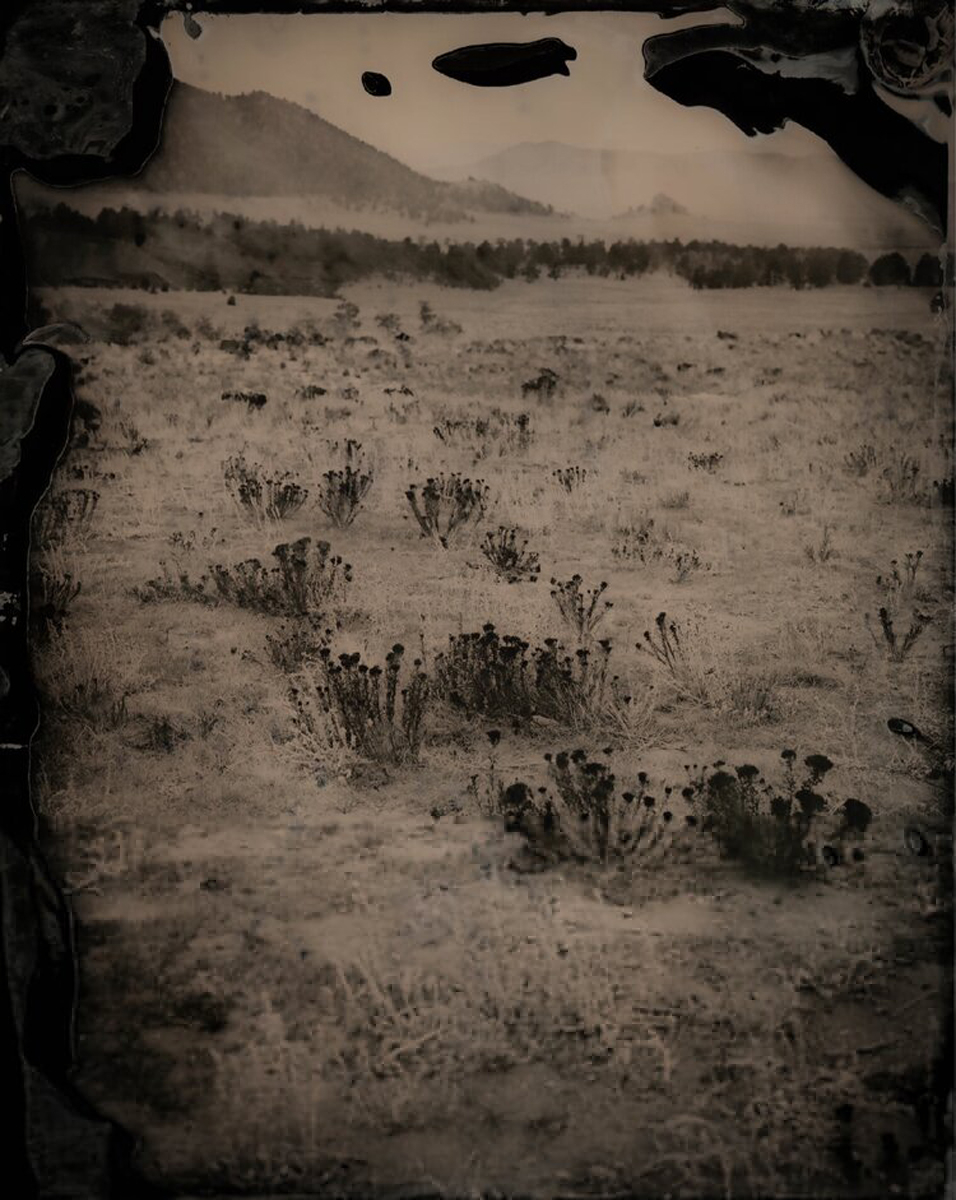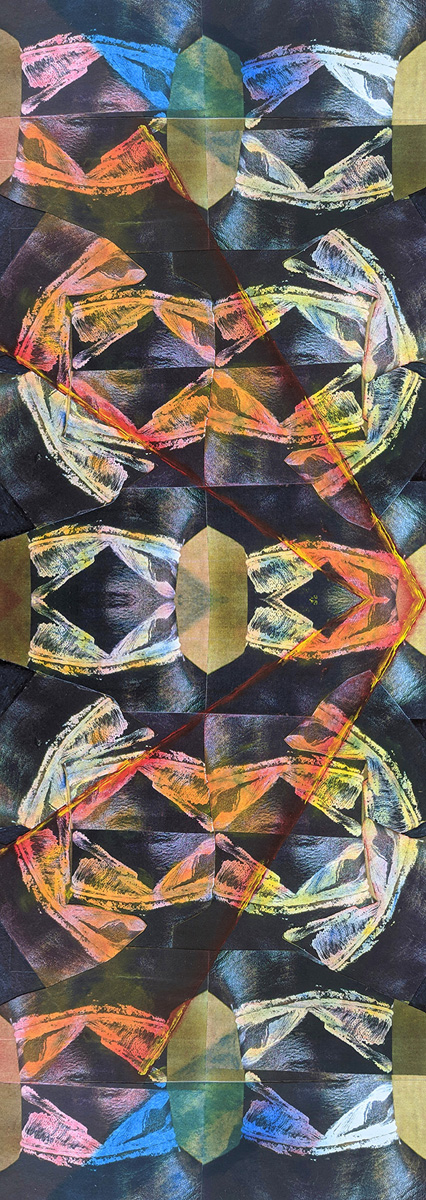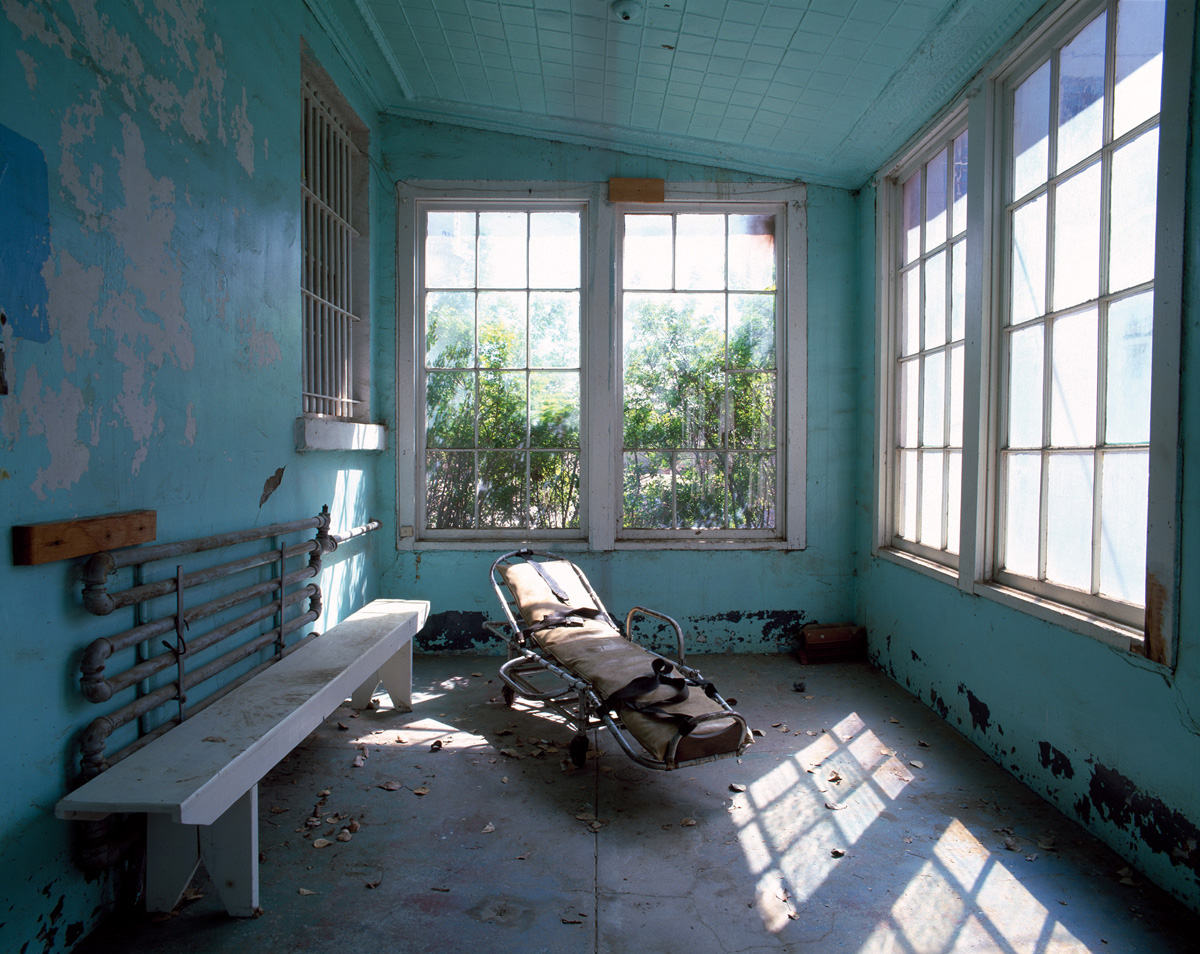
With or without a pandemic, it is natural for many of us to often think worst-case scenario in a number of situations. It comes with the territory as we go through life exposed to news broadcasts, social media snippets or through casual conversations that direct our attention to worrisome weather, nearby violence, or the articulation of horrific scenes from faraway countries devastated by natural or man-made disaster. So we suppress those negative thoughts, or so we think, and live as best we can, guided by acceptable common behaviors. On the other hand, visual artists can 'play out' otherwise unspoken thoughts, impressions or conclusions, representing those pent up anxieties through symbols or scenarios that express how one’s brain can filter, then forward staged or actual visualizations through the lens of a camera.

London Amara utilizes an early photographic process that employs wet negatives that demand only a 15-minute window to create a print. This collodion process produces highly contrasted soft-focus images that often have defects in the dark edges, giving the overall appearance of this work its dreamy quality. The coloration and lack of clarity also suggests a time long ago, inspiring thoughts of land-bound spirits or haunted havens. Then there is the feel of the artist's photographs in works such as Flowering Magic (2019), with its v-like ghosts, or Desert Medicine (2019) with its looming dark phantoms, where you begin to sense something may be wrong. Portrait of Two Stones (2019) creates a level of personification that takes the landscape to another level suggesting the artist is actually forming a future vision, flipping the narrative toward an uninhabitable landscape in a new age.
The narratives in Susan Copich's photographs are far more direct, as we see in the main character, a Stepford Wife-type homemaker on the edge rebellion, plotting her payback to a life defined only by the responsibilities put upon by others. In All American (2015) we see a woman putting the finishing touches on an apple pie while her husband sits lazily in front of the outdoor grill. The handgun on the counter and her troubling stare at the camera intensifies the suspense regarding what happens next. Similarly, in Bath Time, where we have two young children sharing a bath with mommy, who also happens to be holding a hair dryer that can electrocute them all. A tinge of humor lightens the mood in Happy Days (2014), as the juxtaposition of the hangman’s noose intensifies this otherwise happy moment. In the end, the wife and mother in this scene, who cannot ever do enough to fulfill her role, will one day get her revenge.

Kaethe Kauffman’s art shows hands, feet and toes bound, suspiciously marked by ink soaked rope -- bodies constrained from movement or expression -- as patterns emerge to create a distraction. In projecting gesture through rhythmic changes, the artist changes the trajectory of the narrative, albeit for a moment -- as we see with Muscle Movement 1 & 11 or Knee Tree, there is the promise of transcendence in the design, yet there remains the disturbing details. In Neck 28 Red Yellow Blue, the bondage remains as a reminder of the past, a burden that will inevitably reverse the rights or progress achieved by countless brave souls. The age-old message here: if we do not learn from the past we are destined to repeat the same mistakes in the future, as the cycle of oppression that has no moral basis continues.

Nancy Macko brings to light with her alluring photographs, the fragile beauty of nature. At first glance we are drawn to the ceaseless beauty of nature as exotic colors and captivating shapes abound. Through close-up images of plant life, and by placing the images in a circle, Macko adds a level of intimacy that the smallest of our planet’s creatures experience daily. That intimacy, in turn, reminds us of the dire situation of how the insect population is declining and what affect that would have on any and all animal life that depends on certain bugs for food, not to mention the pollination of crops that we so dearly depend upon. Science Daily reports that "Pollinators affect 35 percent of the world's food crop production…," and if we lose that we are in dire straits.

In capturing the decaying prison system, and a variety of decrepit industrial settings largely hidden throughout the U.S., Lee Saloutos brings to the fore the hellish fate many have endured as punishment or employment. Dangerous, dismal spaces that immediately haunt the minds of all comers formed by unforgettable, past atrocities -- places where one’s soul is lost in a system of inhumanity. The deserved, as well as the falsely accused and punished share a common space, while others see the daily grind to simply put a modicum of food on the table as an end in itself. The drama in the natural lighting captured in these images adds to the chill of the cold hard concrete and steel, while the peeling paint, rusted metal and dusty air becomes one organism -– the belly of the beast.
To see this virtual exhibition please visit https://bit.ly/ccpendisnear
D. Dominick Lombardi, Curator
